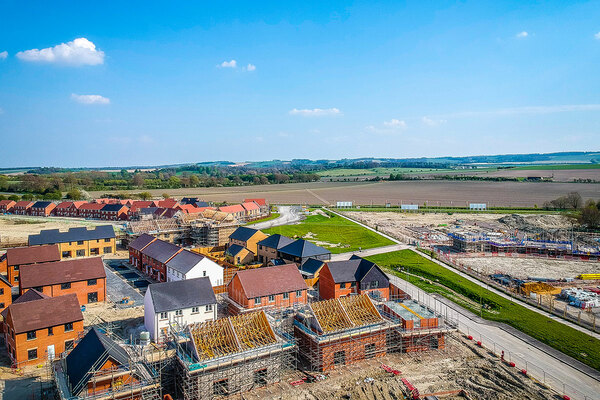You are viewing 1 of your 1 free articles
In brief: what is the government proposing with its major planning reform?
What are the major changes proposed in the government’s new Planning White Paper? Peter Apps explains the major proposals for reform
A white paper on sweeping reform to England’s planning system has been published today. We run through the major proposals for reform below:
Categorisation of land:
The key change under the new system will be that permission to build new homes rests on the categorisation given to the land on which it is going to be built.
Land will be designated for:
- Growth: these areas will be categorised as suitable for substantial development, with permission granted automatically for the “forms and types of development” as specified in a local plan. The government said it envisages this category including “new settlements and urban extension sites, and areas for redevelopment such as former industrial sites or urban regeneration sites” as well as other sites where major development could be possible, such as land around universities.
- Renewal: these areas will be deemed “suitable for development” and is intended for “existing built areas where smaller-scale development is appropriate”. The government said it could include the gentle densification and infill of residential areas, as well as development in town centres and around villages.
- Protected: areas which “justify more stringent development controls”. This would include areas such as green belt, areas of outstanding natural beauty, conservation areas, local wildlife sites, areas of significant flood risk and important areas of green space.
Local plans
Within this new system, the local plan will set the categorisation for land and become the key democratic control of local planning policy. The government said plans will become shorter – setting an expectation that they will reduce in length by two-thirds – and will involve simply “a core set of standards and requirements for development”.
Legislation will require a 30-month timetable for the production of these plans, with the government demanding councils “radically and profoundly reinvent the ambition, depth and breadth with which they engage with communities” as they prepare them, allowing people to view and comment digitally.
Design standards
Local design codes will be established, with the support of a national body based on the ideas developed by the Building Better, Beautiful Commission and a fast-track system for “beautiful” developments.
Councils will be tasked with doing so “in ways which reflect local character and community preferences and the types of buildings and places that have stood the test of time, but it should also address modern lifestyles, facilitate modern methods of construction”.
A new National Model Design Code will be published in the autumn to supplement this process. In growth areas, compliance with a masterplan and site-specific code will be a condition of the automatic permission.
The government is also promising “ambitious” improvements in energy efficiency standards, with new homes required to produce 75% to 80% lower CO2 emissions compared with current levels from 2025.
Affordable housing and developer contributions
The new system will see the current regimes of Section 106 and Community Infrastructure Levy payments scrapped and replaced with a new ‘Infrastructure Levy’. This levy will be charged according to the final development value of the project and be paid at the point of occupation.
Councils will be able to borrow against future levy payments to bring infrastructure in early. A certain value will be set below which no levy will be charged. Revenues will be collected locally and the rate will be set nationally, either as a fixed national rate or on an area specific basis.
The levy can fund affordable housing, which can continue to be provided on site and sold to an affordable housing provider – as per Section 106 agreements in the current model. The discount applied to the affordable homes would be charged against the sum of the levy.
A mechanism would be introduced allowing councils to shift back to cash if no affordable housing provider was willing to buy the homes due to quality concerns. The levy may also be extended to capture development carried out through ‘change of use’ and permitted development rights – which currently pay nothing towards affordable housing or infrastructure.
When will this all happen?
This consultation kicks off a major process of reform that will require primary and secondary legislation. There is also the 30-month timeline for new local plans to be written. The government’s ambition is to deliver its reforms by the end of the parliament.
It is also important to stress that they only apply to England as planning is devolved in Scotland, Wales and Northern Ireland.
Sign up for our daily newsletter
Already have an account? Click here to manage your newsletters













